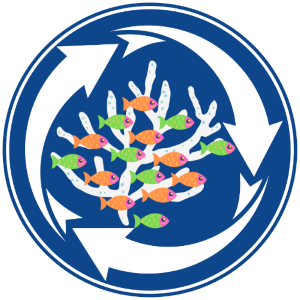"Saving the Past and Future of the Red Sea Biodiversity."
Rising sea temperatures and seasonal temperature spikes, are threatening the more fragile coral types of the Red Sea's reef systems. Coral Bleaching which was a once or twice in a decade occurrence, has now turned into a deadly yearly event in Sudan for instance; these events go hand in hand with algae blooms, making them even more deadly for all biodiversity. During these heatwave events, temperatures can top 35°C (95°F).
NARRATIVE
The Red Sea is a rich and diverse ecosystem. More than 1200 species of fish have been recorded in the Red Sea, and around 10% of these are found nowhere else. This also includes 42 species of deep-water fish. The rich diversity is in part due to the 2,000 km (1,240 mi) of coral reef extending along its coastline; these fringing reefs are 5000–7000 years old and are largely formed of stony acropora and porites corals. The reefs form platforms and sometimes lagoons along the coast and occasional other features such as cylinders. These coastal reefs are also visited by pelagic species of Red Sea fish, including some of the 44 species of sharks. It contains 175 species of nudibranch, many of which are only found in the Red Sea.
Sudan is home to some of the richest coral reefs of the Red Sea, and undisturbed by human development, however threatened by global warming.
Sanganeb Marine Park is also the Red Sea's only atoll (UN World Heritage site), Shaab Rumi is home to the remains, of man's first forays into underwater living. It houses the world famous 'Pre-continent 2' garage, used by Comm. J.Y. Cousteau, during filming of the Academy award winning "Le monde sans Soleil" documentary.
Egypt is the counter pole of Sudan in the Red Sea, while there is no protective apparatus in place in Sudan, Egypt boasts different organizations, and most important enforcement. However Egypt's reef are under more strain, due to the incessant industrial and tourism development.
VISION
"In order to combat bio diversity loss in the Red Sea. Drawing inspiration from 'Svalbard' the Norwegian Doomsday seed vault in the arctic region. 'The Vault' will act as it's sub tropical marine counterpart, in the Red Sea. Collecting and reseeding fragile species."
Our mission, is to create natural, monitored and managed safe spaces for the Red Sea's marine fauna and flora. Extend the life span, and restore extinction threatened species to healthy populations, ready for transplantation. After having reached several maturity stages, expected to take approximately 3 years; the vault will then also be able to re-seed area's in the broader Red Sea region.
IMPLEMENTATION
Ain Sokhna is located 80 Km South of Suez and the entrance of the canal. It is without a doubt, the area nearest to the Red Sea's biggest hotspot of industrial development and one of the world's busiest waterways. As such it is perfect location to learn how to counter direct human, and industrial impact on the Red Sea.
Through the development of the MAERC project located in the Dome Marina Resort & Hotel compound, with it's amazing infrastructure and 1.9Km of shoreline in need of rehabilitation, we have found the perfect counter pole to our other location in Port Sudan.

